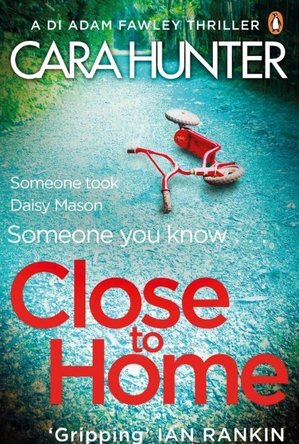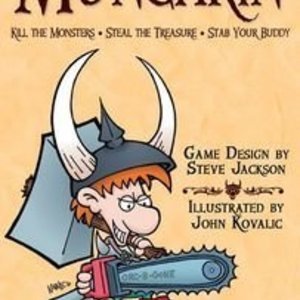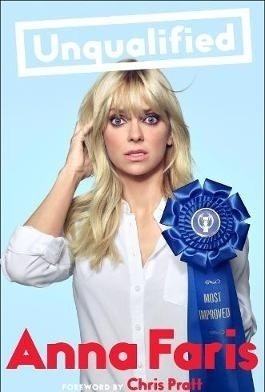
FileBrowser - Computers+Cloud
Utilities and Productivity
App
Use your iPad or iPhone to connect to your home computers, network drives and cloud storage,...
Ivana A. | Diary of Difference (1171 KP) rated Close to Home in Books
Oct 2, 2020
Close To Home is the first book in a series called DI Adam Fawley. The books are not related to themselves and can be read as standalones. They all feature the detective Fawley, therefore the series solution. Something similar to Dan Brown's series. I listened to the audio book, and I think that the format might have a little blame on my rating.
In this book, the 8-year-old girl Daisy Mason disappears from her parents's summer party. No one in the neighbourhood saw anything, not even the parents, and the detective is trying to keep an open mind in this whole situation, as someone is clearly lying.
The story begins with an interesting premise, and I loved the initial interviews that are happening, right after the disappearance. And after this initial moment, everything goes downhill.
There are many twists in this book, and they all are happening based on dumn luck or weird circumstances.
I would understand if this happened once or twice, but they have solved the whole mystery with coincidences happening one after another as well as random plot lines being added in the middle of nowhere, just to keep the story going.
Oh - we're running out of clues. Let's add a secret random second family the dad has. Oh - we're running out of clues again. Let's add a suspicious background for the mother. And now, let's make both these events come up at them at the same time, right when we're trying to solve an investigation. And now, let's add a mental issue with the brother. (Despite receiving all doctor's reports at the beginning)...
Too many events that came up afterwards and that I still have trouble to believe could make sense.
And on top of all this, I need to mention that the book doesn't have chapters as such. The parts are split with excerpts from social media. Something which I truly believe I would have enjoyed if I read the book. But instead, I was listening to it. And it is so annoying.
The below excerpt is not a quote, as I don't have the paperback copy. However, it does represent the true format of how this sounded in the audiobook:
Twenty-ninth of October, nine twenty five.
Angela G Bettaton at angela dot g bettaton. I hope they find the person that took Daisy. Hashtag Daisy Mason. Hashtag Find Daisy.
Mike eighty seven at mike dot eight seven The person that did this should take responsibility. Hashtag Find Daisy. Hashtag Missing Girl.
The ending - it just wasn't worth the wait, and it was the most unsatisfying ending I have ever encountered in mystery novels.
I regret picking this book up and I regret reading it. I really wish I love it, as I was looking forward to Cara Hunter's new novel, but now, I am not so sure anymore.
If you think you might enjoy it, please pick it up! Perhaps you might love it, who knows!

Cisco Legacy AnyConnect
Business and Utilities
App
This version is now known as Cisco Legacy AnyConnect and will be phased out over time. The newer...

FineScanner PRO - PDF Scanner
Business and Productivity
App
FineScanner turns your mobile device into a powerful all-purpose mobile scanner to quickly capture...

Betway – Play Live Casino, Roulette & Card Games
Games and Entertainment
App
You’re sat in a casino. You know what it's like to have the urge to win. You know what it feels...

VR Hollywood Blvd by Car Virtual Reality 360
Entertainment and Travel
App
Nice VR experience and beautiful memories if you already were there or if not, gain experience as if...

Ferrite Recording Studio
Music
App Watch
Ferrite combines the ease-of-use of a “voice memo” audio recorder, with a versatile multi-track...
music
Purple Phoenix Games (2266 KP) rated Munchkin in Tabletop Games
Jan 6, 2020
In Munchkin games, you are trying to become the first player to reach 10th Level. That’s the goal. You take on the persona of a 1st Level basic human (no Starbucks jokes please) who will be adventuring with a party of your opponents through a dungeon. You will be kicking down doors, fighting monsters, placing curses on your fellow party members, and buffing yourself with cards featuring funny art and punny references. Your party mates are also trying to achieve 10th Level and will do everything they can to block your progress, so be prepared!
DISCLAIMER: This review is not for a specific game within the Munchkin universe, but for the system as a whole. All Munchkin games will pretty much use similar, if not exactly the same, rules to play the game with minor variations and different theming. I will be using The Good, The Bad, and The Munchkin for my review as it is one of the two versions I still own of the franchise. Also, I will not be detailing every rule in the book(s), but giving a brief overview of how the game plays. -T
Setup is easy: shuffle the deck of Door cards and the deck of Treasure cards. Deal cards to the players for their opening hands and keep the included die handy.
Your turn consists of just a few phases: Open a Door, Look for Trouble, Loot the Room, and Charity. To Open a Door, flip over the top card of the Door deck. If it is a monster you must fight it or run. If not a monster, you can move on to the next phase. If it IS a monster, prepare for combat. Combat is simple in that you add up all your bonuses from your gear cards you have attached to your character and try to beat the strength of the monster. Your party mates can screw with you during combat by adding strength to the monster or adding monsters to the fight to make it a more difficult encounter. If you win, you gain a Level on the spot. Some monsters are worth even more than one Level. If you did not encounter a monster, you will add the non-monster card you drew to your hand and you may Look for Trouble by playing a monster card from your hand to initiate a combat. This fight will work the same way and you will be susceptible to pile-ons as before. You may Loot the Room if you defeated a monster on your turn by drawing Treasure cards equal to the printed reward on the bottom of the monster card you defeated. If you defeated the monster yourself, unaided, these are drawn in secret. If you were given help by your mates then you may have to split up the loot per any agreements made. These cards are usually very advantageous to you so they are usually very valuable to others as they attempt to steal away your goods. If you did not fight a monster yet this turn, you may draw another secret card from the Door deck to add to your hand. Should your hand size climb above your limit (dictated by your Race card, if any) you will slide into the Charity phase to relieve your hand of extra cards. Give all excess cards to the player of lowest Level, or split them among those that share the lowest Level. It is now the next player’s turn and you continue play until someone reaches 10th Level.
Components. It’s a bunch of cards and one die. The cards are of okay quality. Nothing to write home about. The die is nice with one of the faces having the Munchkin logo head imprinted on it. It will also have a color scheme that matches the version of Munchkin you are playing, so it’s easy to match them back up if they become integrated with each other. Overall, the components are fine, but not wonderful. That’s probably why these are pretty inexpensive to purchase.
Okay, so like I said earlier the original vanilla Munchkin was the first hobby board game I ever purchased. My friends and family had no idea hobby games existed, so there was actually a pretty steep learning curve for us. Once we figured it out, however, we began to play it a ton and really love it! The cards are cute, the game play is pretty easy if you have played hobby games before, and the puns kept us rolling for a good while. There was a time when I owned every version of Munchkin in circulation and we never even played half of them. Seeing this I got rid of them through BGG Auctions. I have The Good, The Bad, and The Munchkin and Munchkin Zombies right now and I feel that will be plenty for me from here on out – unless they make a Doctor Who or Firefly set or something /*checks warehouse23 to find out if these are available/.
Do I still love Munchkin? No, not really. I LIKE it, but I don’t really want to play it all the time any more. Why? Well, as my gamer experience increases and I level up, my game tastes also level up. I see why people enjoy and even love this game system. I myself loved it for a time. But there are better games out there that accomplish the same feelings without being as sophomoric and have better choices to be made. Will I still play these games? Heck yeah! If someone asks to play a Munchkin game I am all in. I have different tastes and preferences now, but I’m no snob. Just come prepared, because I won’t go easy on you.
We at Purple Phoenix Games give this family of titles a backstabby 16 / 24.
Overall, the book feels pretty real and authentic. You quickly get an idea of the kind of person Anna seems to be--kind, funny, talented, and perhaps a little insecure. I'll admit that since I started listening to Anna's podcast, I've felt a kinship to her, and my review is obviously influenced by that. She's so down-to-earth and really damn funny on her podcast. I also love the idea that she lived in her head for much of her childhood, making up stories (it sounds a little familiar, you see). If you like Anna's podcast, it will be hard not to enjoy her book, although some of the chapters and stories will sound a bit familiar if you're a faithful listener.
My love of Anna was only deepened by reading her book, which is quite readable and broken into simple, short chapters. We get glimpses into Anna's childhood, her first big relationship, a little insight into her big break with "Scary Movie," and more. I relate to her on so many levels. We're both fascinated by other people's lives; never had a big group of female friends; have no patience for small talk; are not wedding people; possess an emotional defense built up from our parents; and enjoy calling the numbers on vehicles to report about truck drivers' good driving. She just happens to be a lovely, famous, wealthy actress, and I'm um, well, yes. Otherwise, we're the same, right? ;)
Of course, the elephant in this review is Anna's recent split from her husband, Chris Pratt, who wrote the foreword to the book, which was apparently revised somewhat for publication. It's hard not to psychoanalyze Anna in light of her recent marriage breakup. You read about her self-admitted inability to admit failure and her tendency to jump from one relationship straight to the next. So much of the book is about Chris and their relationship, and it's a shame that it's a distraction from an enjoyable memoir about a really smart and talented woman, who should stand on her own merit, apart from her (soon-to-be-ex) husband. It's also heartbreaking to read these chapters where it sounds like they truly love each other--and where they got through the premature birth of their son together--and know they are no longer married.
Overall, this is a fun, easy-to-read memoir. If you like Anna, her films, or her podcast, you'll probably enjoy this one. It's a quick read, full of lists, humorous moments, and short chapters, although there are definitely serious pieces, too. It really only made me like her more. 3.5+ stars.



